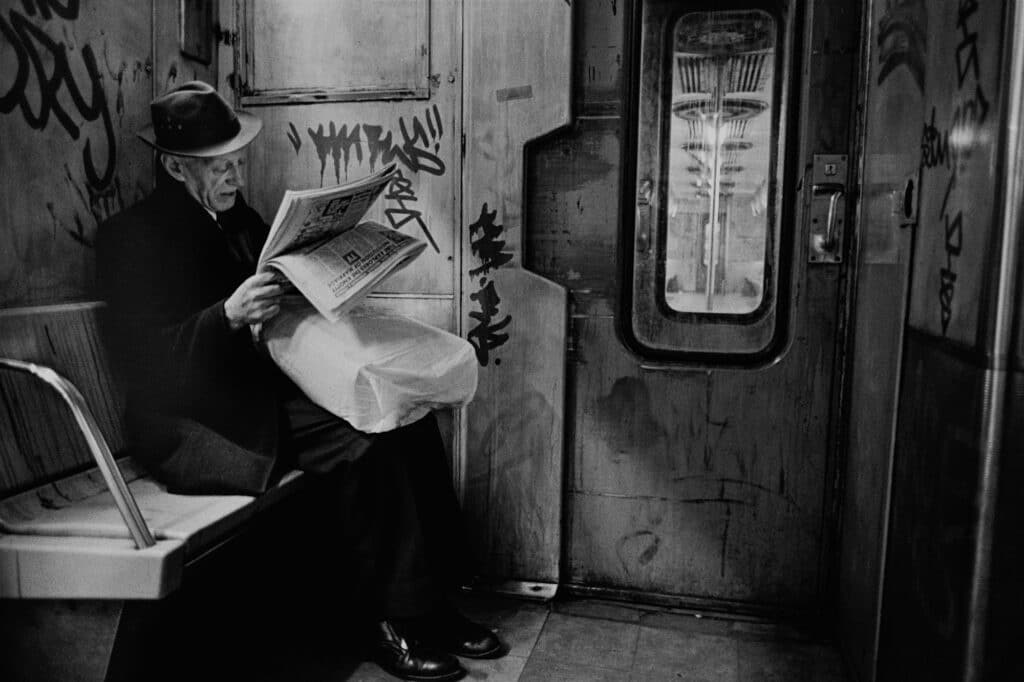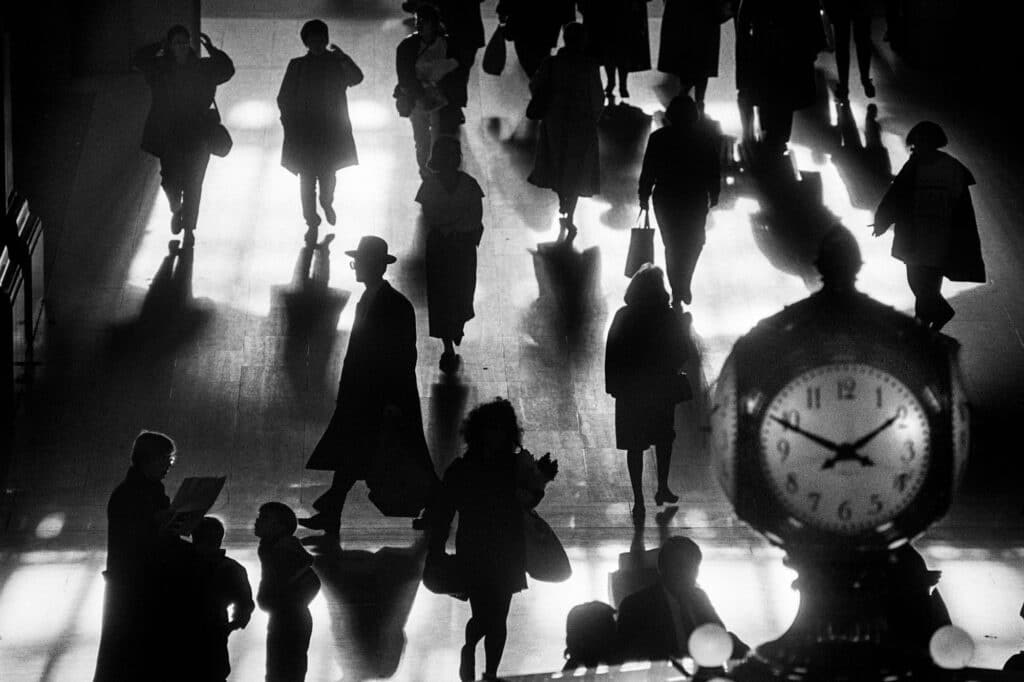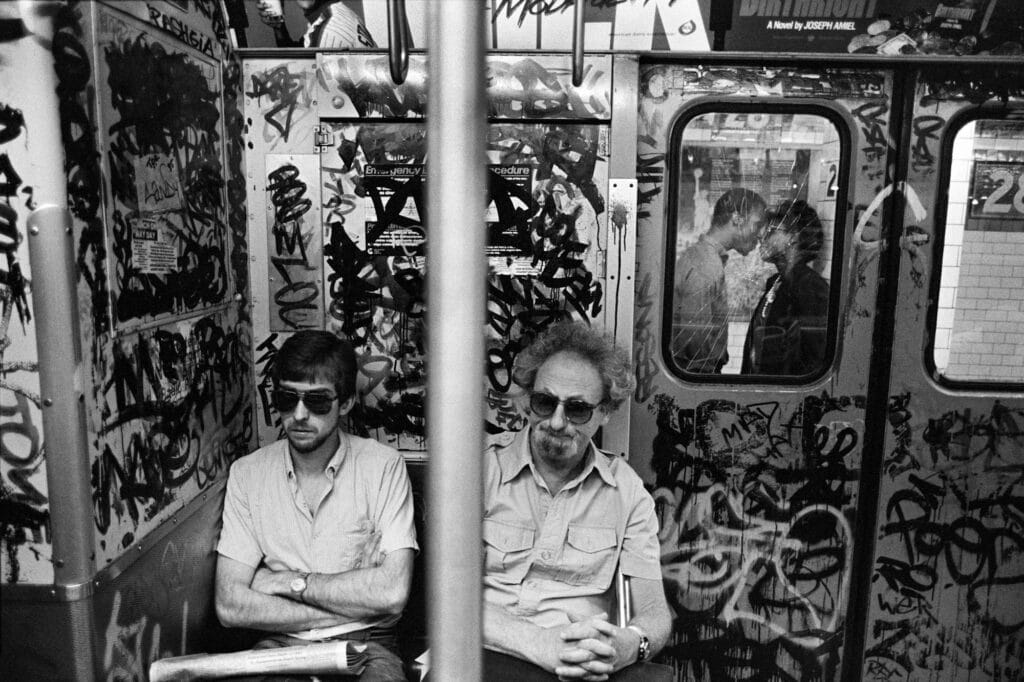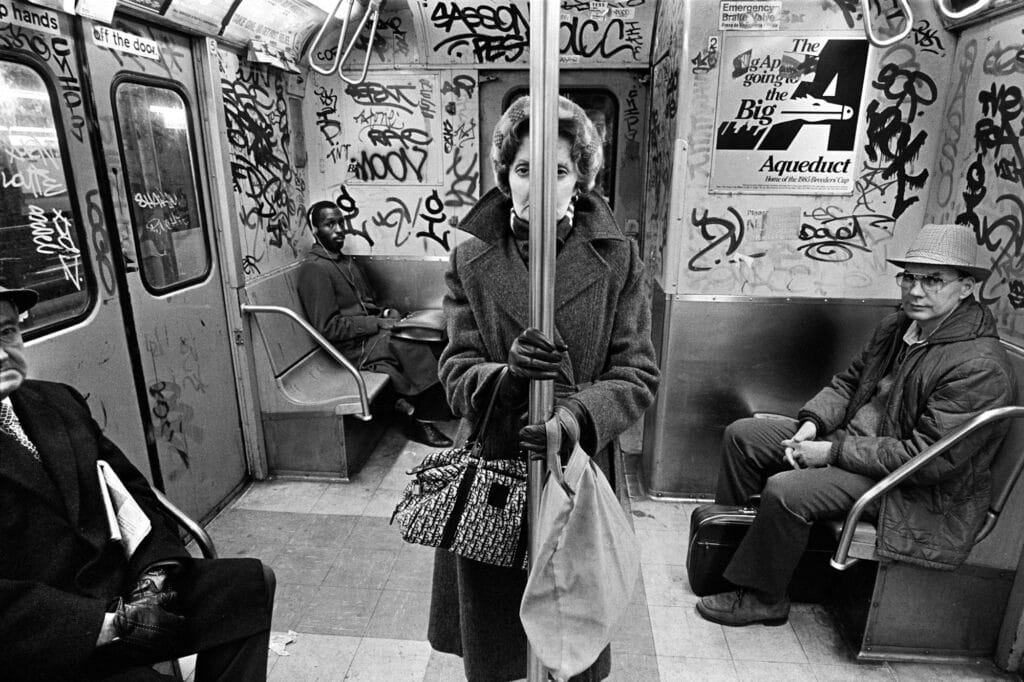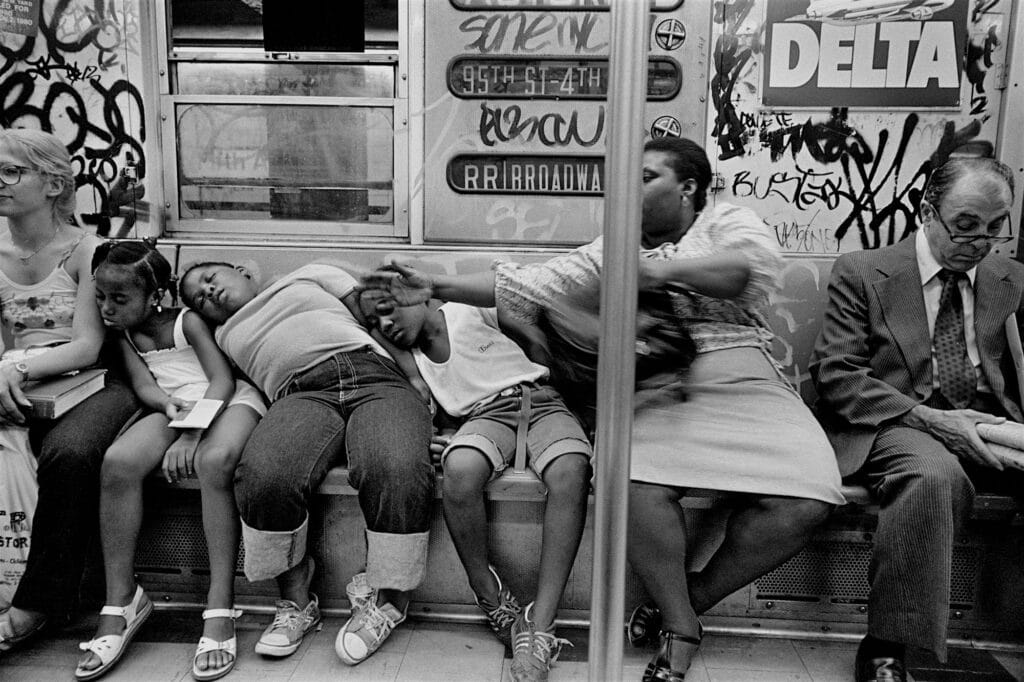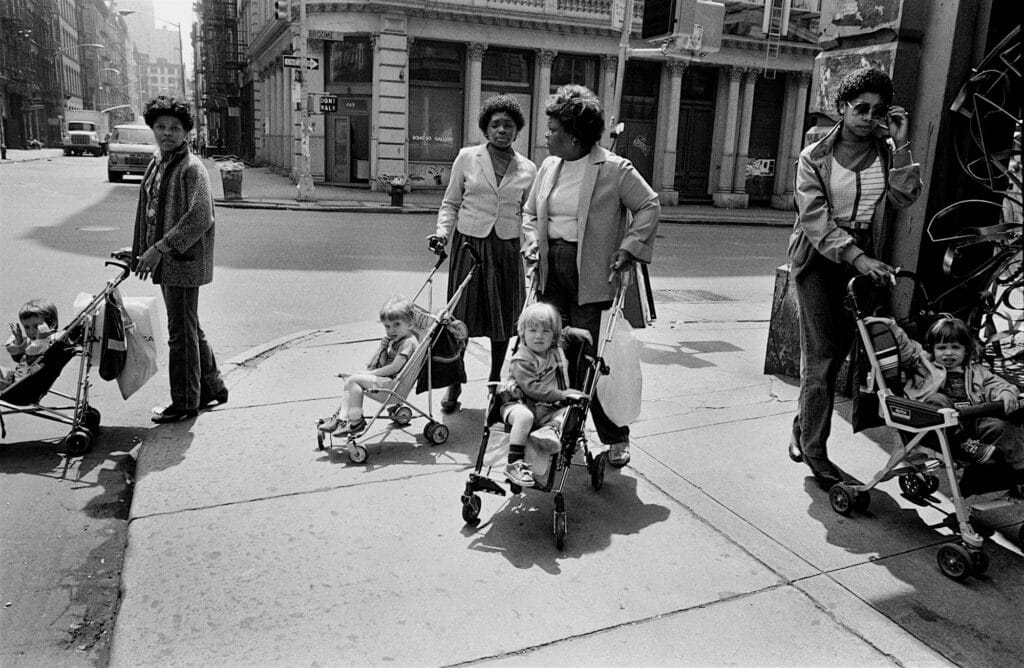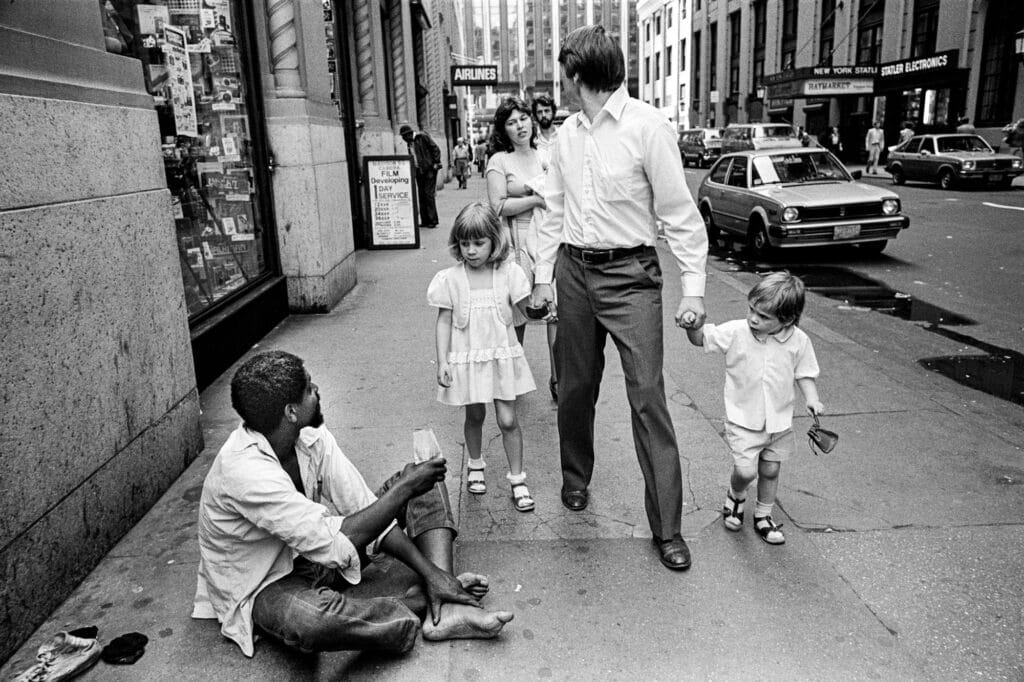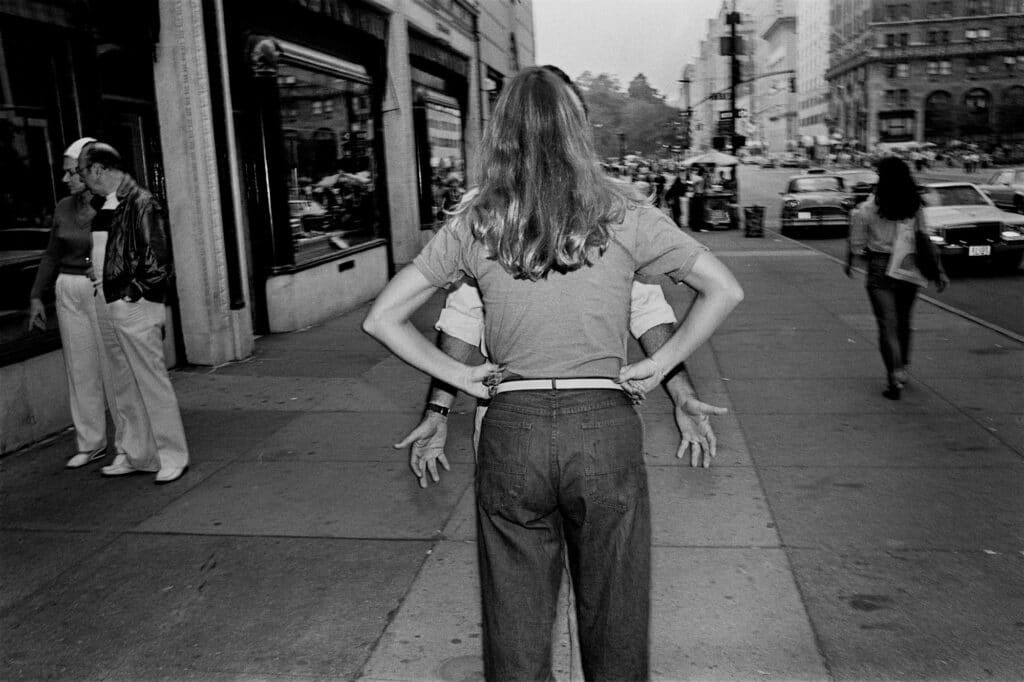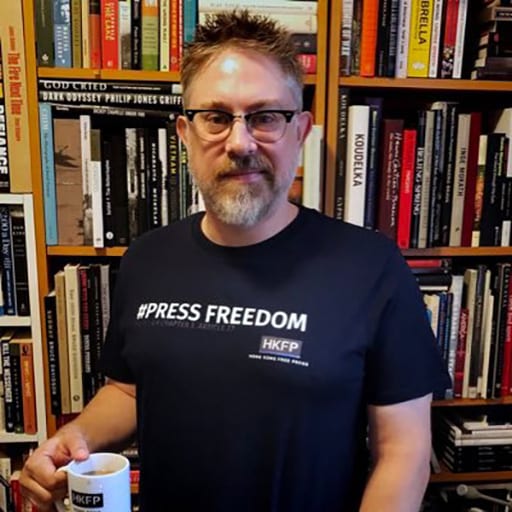Photographer Richard Sandler grew up in Forest Hills, Queens, not too far from the city. Around the age of 11, without telling his parents, he could safely take the subway into Manhattan without trouble. He would go to Hubert’s on 42nd Street, which was a sideshow with a flea circus and a freak show.
“I remember these images when I was around eleven, peering into the adult world. Of course, this was a kind of grotesque version of it. It was a sideshow kind of a place, like the kind of thing you would find in a county fair or something in the ‘50s or ‘60s. I didn’t know what it was about, what it was. But I was such a visual person after that.”
Darkroom
In 1977, after working in various careers and fields, Sandler was living in Boston, in the house of David and Mary McClelland. David McClelland was a member of the psychology department at Harvard University, working on the humanistic side of the field.
“He and his wife were Quakers, and after their five kids grew up, they just let the rooms out to people who they wanted to form another family with. Really, it was a commune. David’s work was about achievement. We were David’s lab rats,” Sandler says. “He fostered us to want to achieve things, our own goals. Not his, but ours.”
Mary McClelland had a darkroom in the basement of the house, and she taught Sandler how to print. He would also use the darkrooms at Harvard University, which was nearby. Through a friend enrolled at the school, he was able to sit in on a Harvard class taught by Ben Lifson, the influential photo critic and intellectual. It was in this class that he came to know the work of photographers like Henri Cartier-Bresson, Robert Frank, Helen Levitt, and Diane Arbus.
While in Lifson’s class, he learned that famed street photographer Garry Winogrand would be visiting Boston and teaching a workshop. Having been taking pictures on the street, and knowing of Winogrand’s work from his class, Sandler signed up. The experience would be life changing.
A window into another world
“I learned everything I needed to know to really up my game just by watching him and watching who he saw. He saw what he was looking for. In every case, it was something funny or soulful or human on a very ordinary kind of level. But he was putting it into the frame in such a way that the picture became like a window into another world. I really wanted to do that,” Sandler says.
“I’ve heard many other people who took Winogrand’s workshops say the same thing. He just turned their heads around.”
But as Sandler is quick to say, luck has also played a role in his life. In Boston, he quickly found photography jobs at a couple of alternative newspapers, the Real Paper and the Boston Phoenix. When he showed his portfolio to the photo editor at The New York Times, he was told that if he moved to New York, they would give him work. And so he left Boston and headed to the Big Apple.
“I guess I want a sense of humanity”
Once he settled in, Sandler realized that what he was earning from The Times and his other freelance gigs was not enough to live on. To supplement his income, he took jobs as a foot messenger, running packages all around the city. But even that led to more photography.
“That got me on the subway and moving around the city all the time. So, again, my sort of good fortune. I guess I invented that part of it though, because I wanted to be on the street and make money, too.”
The bulk of Sandler’s work in The Eyes of the City was taken between 1977 and 1992. The photos are a glimpse into the life of the city spread out before a man who looked, who knew what he was looking for, and who wanted people to look back.
“I guess I want a sense of humanity,” Sandler says. “I called the book The Eyes of The City, because you see a lot of people looking at me, and I’m waiting, sometimes, for them to look at me.”
A city going through enormous change
Sandler’s photographs capture the interplay of class, race, wealth, poverty, politics, and social issues in a city going through enormous change. During the years he roamed the streets, the city went from being on the verge of bankruptcy and sky-high crime rates to the start of its current age dealing with gentrification, broken windows policing, massive building projects, and the reshaping of neighborhoods. But there are no clean-cut answers in the photographs as to why things are as they are. There are only the questions asked by the photographer himself.
“I had a complicated sort of malaise in those days to a certain extent, and I’m asking my questions. And those pictures, shall we say, the best ones ask more questions than they answer. So I’m trying to make pictures that are variably interpretable so that you don’t really know exactly what’s going on.”
Sandler’s work has an energy to it that is not easy to accurately put into words. It’s a quality that can be hard to express, but when you see it, you know it. Many street photographers search for it, and try to capture it, but few succeed to the extent that Sandler does. Yet in photography, a static medium, there are limits to what the photographer can capture and portray.
One-person films
In the 1990s, Sandler got interested in making one-person films, which allowed him to use both sound and movement.
“I got bit real hard by video… One person video, shooting on tape on a camcorder with a good mic on top. I always carried my camera, but I shot much less starting in 1992, and shot more and more video in Times Square and in East Village and on the subway. I was doing both, basically. But video was more important than still photography because I knew I had already made probably the best pictures. I didn’t want to keep repeating myself.”
Three of Sandler’s films, The Gods of Times Square, Sway, and Brave New York are on view along with his photographs. The films capture the essence of Times Square and the East Village in the 1990s as these iconic areas of the city began to change, just like in the city in his photographs. With the addition of sound and movement, the movies frame the events in a way that still photography is unable to because of its static nature. Taken together, the two mediums play off each other and present a view of the city unlike any other.
September 11, 2001
While Sandler was still making photographs as he made his films, that was soon to change. The events of September 11, 2001, drove Sandler to give up still photography, and he moved completely to video.
“When 9/11 happened, it seemed like still photography was too romantic. There’s no sound, you’re not hearing what’s going on. It’s like taking a little piece out of time. And what was much more important was sound. It was much more important to shoot in Union Square Park on the day of 9/11. In the couple of weeks following 9/11, I didn’t even take my still camera with me … Still photography just didn’t cut it for me as a medium to express what I felt and saw after 9/11.”
“A photograph is a new thing. It’s something other than the worldé
Sandler knows photographs are not the real world, but a reduction of it. They are of the world, but are not the world. He learned these lessons from Winogrand, and that the making photographs is to see how things look in photographs.
“The thing about photographs is that it’s a whole different thing. It’s not the real world. It’s taking the real world of three dimensions and putting it in two,” he says. “Everything’s in the foreground, everything’s touching, everything. So the space is flattened in a photograph. I mean, you can change that by using wider angle lenses and stuff, but a photograph is a new thing. It’s something other than the world.”
« The Eyes of the City » is on view at the Bronx Documentary Center (BDC) through March 26th.
There will be a showing of Sandler’s film “The Gods of Times Square” at 6 PM on the 25th, followed by a Question and Answer Session. Information on the BDC can be found on their website.
